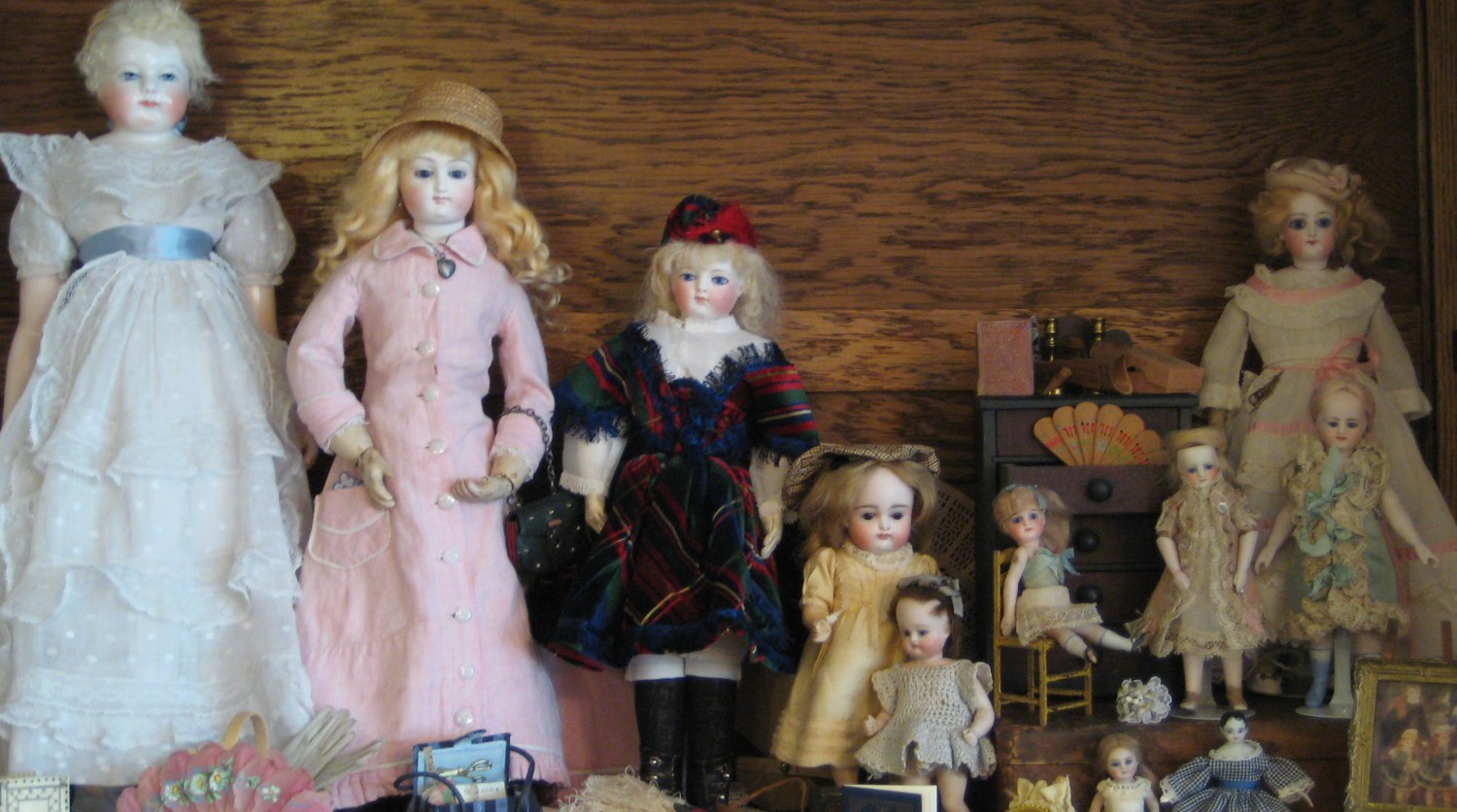
Almost 11 months ago I decided to make a fairy costume for my 1870’s French Bru poupee, inspired by this early 17th century drawing by Inigo Jones.


The doll stands just over 14″ (36cm) tall and has an articulated wooden body.
The first layer of her costume is an embroidered smock, inspired by Janet Arnold’s book, Patterns of Fashion 4.

The embroidery pattern was found, last June, on the wonderful Flowers of the Needle website in Flowers of the Needle Volume VI.

I reduced the size of the drawing to make the embroidery just under 3/8″ wide and continued it around the corners. It was transferred, in pencil, to a piece of vintage, very finely woven linen.

It is stitched with Clover Size #50 silk in medium blue, using stem stitch, Holbein stitch and straight stitches. Half of the embroidery was done by early September.
And then things ground to a stop. Working so small took immense patience and intense light. So I procrastinated.

But now it’s done! I am thrilled that the birds, dogs, vines and flowers actually look like birds, dogs, vines and flowers.

I could have/should have embroidered the cuffs, too, but they won’t show and I am ready to move on. I may go back at some point and add some sort of decoration to them.
The smock was hand stitched with Size 90/2 (very fine) linen thread. I used my trusty itsy-bitsy size 12 between needle and only punctured my finger once with the non-pointy end of the needle. I hate the pop it makes as it goes through my skin (eeeew!). But I didn’t bleed on the fabric.

The basic smock consists of rectangles and squares.

Women’s smocks of the period usually had triangular inserts/godets in the sides, but I initially chose not to use them to reduce bulk.
Only problem was that it didn’t fit over her head. So I opened the side seams and sewed in triangular pieces.

To assemble the smock, I finished the edges on all the pieces, either with small folded hems or rolled and whipped hems, then whip stitched the pieces together.


Then I was able to get it over her head.

The fit is loose.

When her costume is complete, only the embroidered neck edge and a bit of the front of the shift will show.

Next step is her pink silk stays, inspired by this pair from the V&A. If any of you history buffs have suggestions for what to use for the boning, I’d appreciate your feedback. Just remember that the stays will be less than 3 inches high.


Pingback: This is a test - My Doll's Trousseau
Rigilene plastic boning is made of seven or so plastic threads sewn together. When my best friend made a Victorian doll’s corset, she clipped the boning into single threads and used a single thread for each of the corset bones.
Thank you. I’ll look for it.
Love your blog. My 93 year old Mother still makes beautiful doll clothes, and I inherited her love of sewing and collecting dolls. You do beautiful work, so detailed.
Thank you. I hope to still be stitching at 93 and beyond. Don’t you?